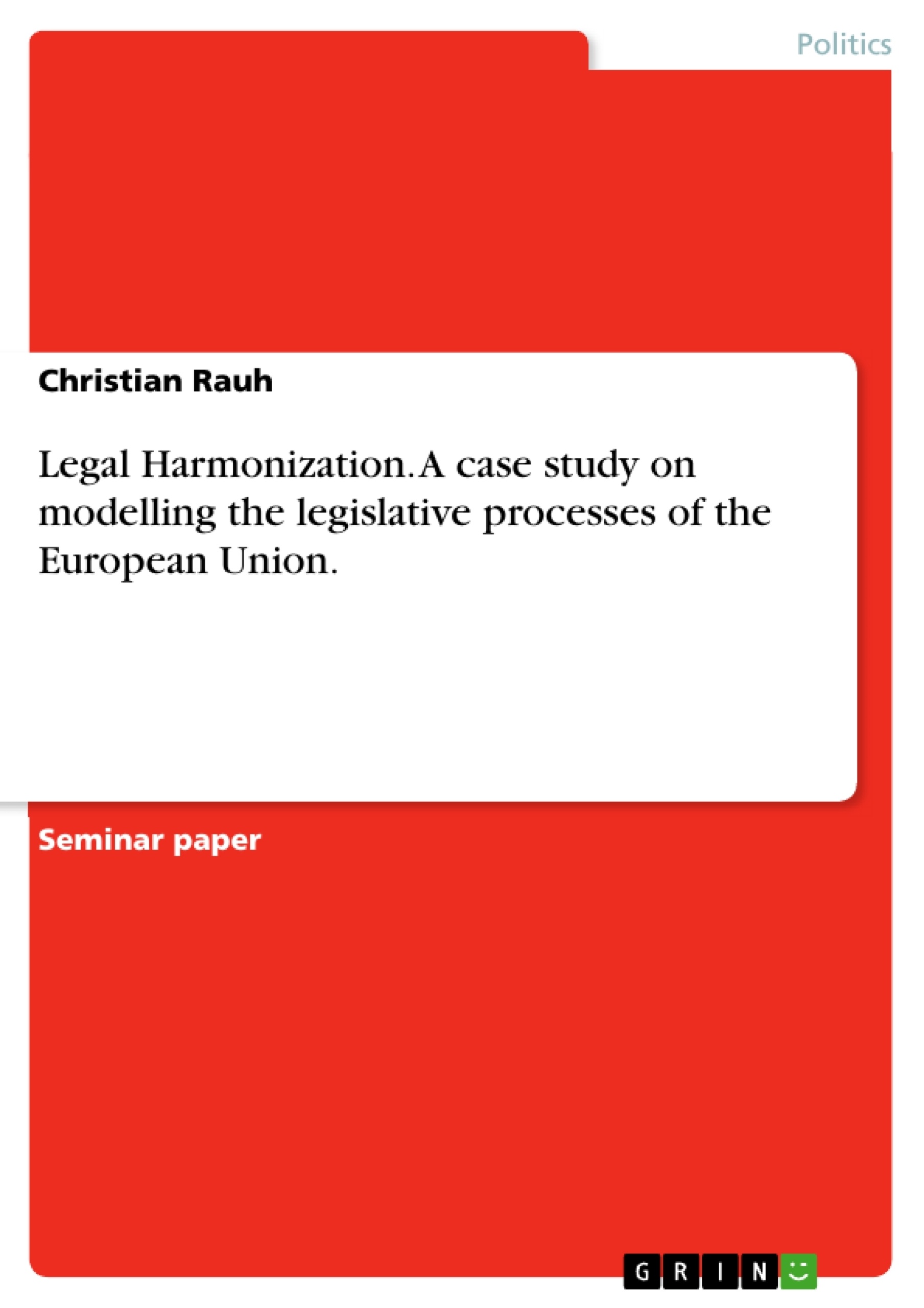The European Union seems to be a very attractive field for scholars of political science. This is probably due to its sui generis character but the even more likely motivation may stem from the intellectual challenges provided by the European decision-making process. This process consists of multiple actors - such as the member state governments or the European Commissioners - and of multiple levels - such as the subnational, the national or the supranational level. I do not want to claim that explaining this process is just a means for intellectual satisfaction, rather questions that affect more or less all citizens within the European Union can be answered this way. For example, if it is known which actor has which influence in the legislative process, any public or private interest group can figure out where to spend its resources effectively.
A fruitful school of thought in this research area is the rational choice institutionalism. Scholars that can be assigned to this school are eager to find parsimonious explanations in order to cover a large class of events within the European legislation. Actors that are assumed to act (at least on average) rationally and to have preferences being exogenous to the decisionmaking processes under analysis are the base for such explanations. Formal or informal rules (that are ‘institutions’) enable or constrain these actors in pursuing their preferences (Aspinwall & Schneider 2000). Hence, modelling such institutions, figuring out their implications and comparing these results to empirical data is the most useful research strategy.
Indeed modelling always means a simplification of reality without which one can not produce generaliseable statements. Researchers differ in their views on reality and may put emphasis on different aspects when establishing a model. Thus different results and therefore debates can emerge that, if at all, only can be solved by empirical examination using a reliable and valid research design. A famous example for such a debate is the one between George Tsebelis and Peter Moser on the implications of the cooperation procedure (Tsebelis 1994, Moser 1994). Here different interpretations of the legal basis lead to different statements on the power the European Parliament is expected to have under this procedure.
Inhaltsverzeichnis (Table of Contents)
- Introduction
- The DEU data set
- Directive 2001/29/EC
- General background
- The directive in detail (DEU data)
- The models
- Spatial modelling
- The models in detail and their application to the directive at hand
- Conclusion
Zielsetzung und Themenschwerpunkte (Objectives and Key Themes)
This case study examines the legislative process of the European Union using the framework of rational choice institutionalism. The study aims to demonstrate how models developed within this framework can be applied to a real-world legislative process, specifically the harmonization of copyright and related rights in the information society (Directive 2001/29/EC).
- The role of institutions in shaping actors' preferences and behavior
- The influence of different actors, such as member state governments, the European Commission, and the European Parliament, on the legislative process
- The impact of legal harmonization on the free movement of goods and services within the European Union
- The interplay between economic competitiveness and legal certainty in the information society
- The use of spatial models in analyzing legislative decision-making processes
Zusammenfassung der Kapitel (Chapter Summaries)
- Introduction: This chapter sets the stage for the case study by outlining the importance of understanding the European Union's legislative process, introducing the concept of rational choice institutionalism, and discussing the need for empirical research to validate theoretical models.
- The DEU data set: This chapter presents the data set, DEU (Decision Making in the European Union), which is the foundation for the case study. It describes the collection process, including expert interviews and data points, and provides an overview of the variables captured.
- Directive 2001/29/EC: General background: This chapter introduces the directive on copyright harmonization, providing context on its purpose and rationale. It discusses the challenges of differing legal protections across EU member states, the impact on the free movement of goods and services, and the need for legal certainty to foster innovation and competitiveness.
Schlüsselwörter (Keywords)
This case study focuses on the following key concepts: legislative process, rational choice institutionalism, spatial modelling, European Union, legal harmonization, copyright, information society, free movement of goods and services, legal certainty, competitiveness, DEU data set, Directive 2001/29/EC.
- Quote paper
- Christian Rauh (Author), 2004, Legal Harmonization. A case study on modelling the legislative processes of the European Union., Munich, GRIN Verlag, https://www.grin.com/document/57152



